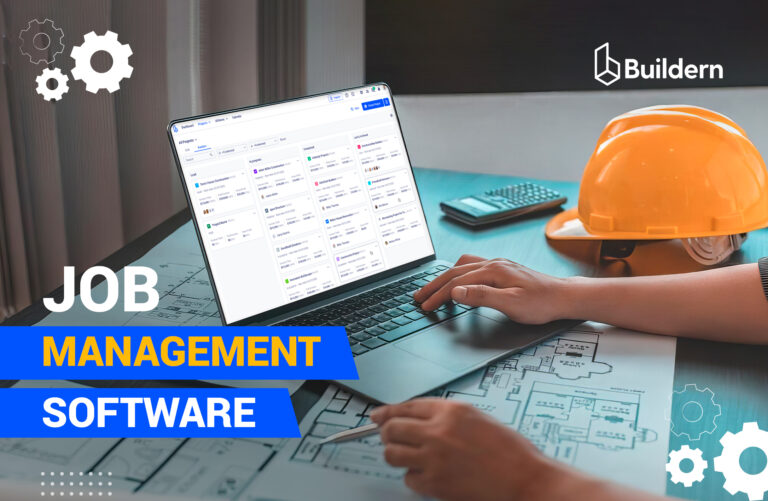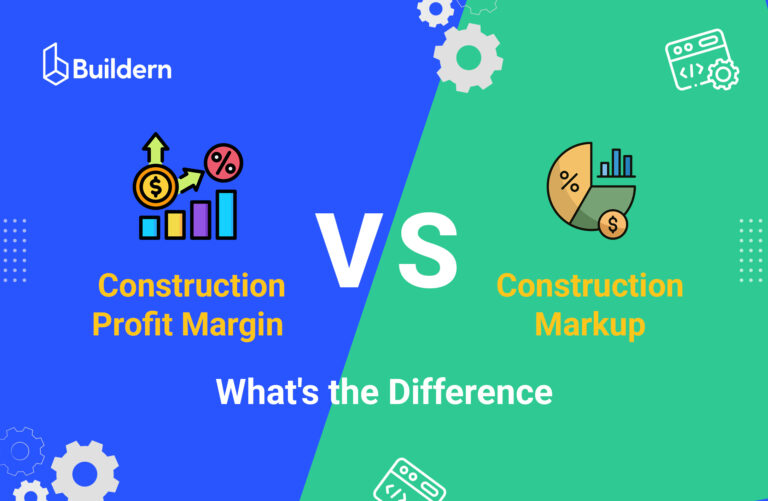6 Contractor Foreman Alternatives to Look for in 2026

Updated December 15, 2025
In construction, nothing stands still for long, not the job site, not the market, and definitely not the software we rely on to run our projects. If you’ve been working with construction management software such as Contractor Foreman, you already know how much difference the right tool can make in keeping projects on track and teams aligned.
But as we move into 2026, it’s the perfect moment to look around and see what else the construction industry has to offer. The construction tech has been developing. Several platforms have stepped up with fresh, more advanced ways to manage schedules, budgets, communication, and everything in between.
In this article, I’m walking you through six strong Contractor Foreman alternatives worth considering.
Table of Contents
- Closer Look at Contractor Foreman in 2026: Power-Packed Yet Flawed
- Contractor Foreman Alternatives Worth Your Attention!
- Final Thoughts
A Closer Look at Contractor Foreman in 2026: Power-Packed Yet Flawed
Contractor Foreman offers a rather comprehensive suite of tools and features to manage the entire project lifecycle. Many builders depend on it from task creation and assignment to contact management and expense tracking.
However, even with everything Contractor Foreman does well, it’s not without its limitations, especially for teams running larger, more complex projects. Recent 2025 user reviews make it clear: while the platform hits the mark for affordability and core functionality, it starts to feel stretched when you move into enterprise-level workflows.
Contractor Foreman doesn’t offer built-in takeoff capabilities and instead partners with specialized solutions to cover this need. While the integration helps streamline data transfer between platforms, it still means relying on an external tool for a core part of preconstruction.
The same applies to accounting. Contractor Foreman doesn’t provide a direct, native integration with platforms like Xero. Instead, users can connect the two through third-party apps. It works, but it adds another layer to the workflow.
These gaps become more noticeable as project demands grow. Larger teams often need deeper automation, richer cost data, and tighter software ecosystems to support fast-moving project schedules and cross-department collaboration.
While not detracting from the software’s utility for its target audience, this limitation prompts the consideration of more comprehensive alternatives for businesses engaged in more ambitious projects.
Now, let me focus on exploring the various available alternatives. The objective is to shed light on different construction project management tools that you may consider as potential replacements or alternatives to Contractor Foreman.
So, here’s where the research has brought us.

Contractor Foreman Alternatives Worth Your Attention!
The construction management software market is developing rapidly. In fact, there is no shortage of comprehensive construction management solutions that can streamline operations, improve collaboration, and give you the flexibility Contractor Foreman may be missing.
If you have outgrown Contractor Foreman, need more advanced estimating tools, want tighter accounting integrations, or simply feel ready for a new step, let me show you some alternatives for 2026.
1. Buildern
Buildern is a next-generation construction management platform built for the realities of modern building, both for residential and commercial projects. The biggest advantage of the software is that it brings AI features and automation to construction management, helping contractors generate accurate estimates, optimize schedules, and detect potential issues early.
And if you’ve felt limited by gaps in Contractor Foreman, Buildern can fill those spaces. For example, you get built-in cost catalog management, flexible estimating workflows, digital takeoff integrations, accounting connections, and an overall smoother, more customizable environment.
New features roll out every two weeks, meaning your software evolves alongside your business. 💡See the constantly updating list of upcoming features.
Construction Estimating with Buildern
Estimating costs can be one of the trickiest parts of a construction project. Get it wrong, and budgets blow up, but if you get it right, everything runs smoother. Buildern takes the headache out of estimating by putting everything in one place.
With Buildern, you can create estimates using both built-in tools and integrated digital takeoff software. Project plan measurements feed straight into your estimates, so material, labor, and equipment costs are calculated automatically. That means fewer mistakes, faster preparation, and estimates you can actually trust.
The platform also comes with a fully stocked cost catalog. You can import vendor price lists, update them in bulk, and reuse them across projects. Want to tweak a past project for a new build? Duplicate it, make a few adjustments, and Buildern updates totals automatically, including formulas, markups, and allowances.
It keeps things consistent and reduces the risk of missing costs. Buildern is focused on using AI for estimating based on cost catalogs, takeoff, templates, or previous project data.
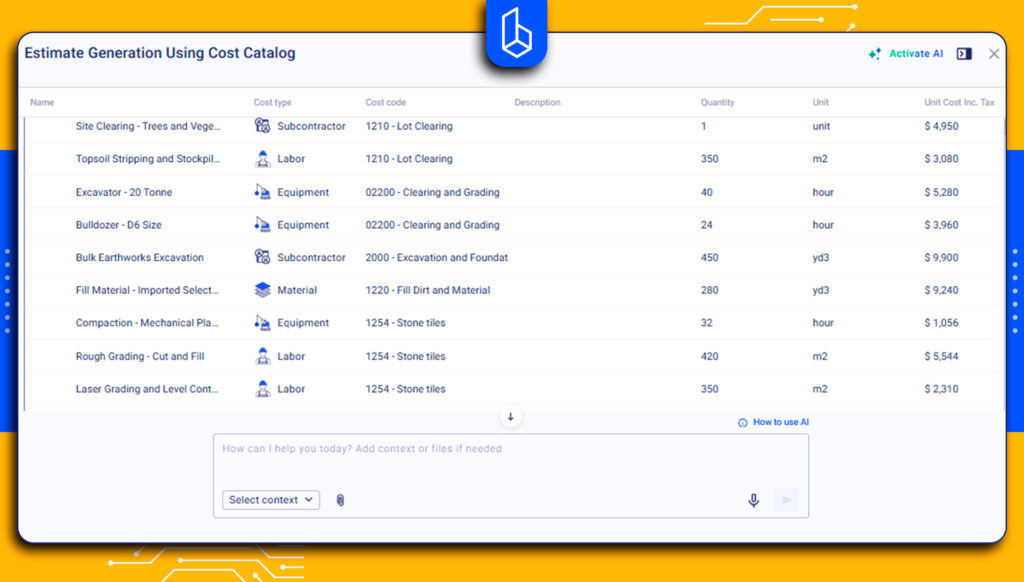
The bidding workflow is also straightforward. The software lets you send bid requests directly from your estimates and send them to subcontractors in a standard, easy-to-read format. All responses come back into the platform, neatly organized, so you can compare pricing, timelines, and scopes without hunting for information.
You can track who’s responded, who’s pending, and approve bids right in the system (built-in communication is another advantage). Once a subcontractor is selected, their details flow straight into your project plan, estimates, and purchase orders.
Scheduling with Buildern
When it comes to schedules, Buildern also centralizes everything in one platform, giving builders a clear, visual overview of every project stage.
Buildern offers multiple schedule views, including Gantt charts, calendar, and list formats, so you can see the timeline from whichever angle works best. Dependencies between tasks are easy to set, whether finish-to-start, start-to-start, or finish-to-finish, ensuring that one delay doesn’t silently throw off the entire project.
AI takes scheduling to the next level. Instead of guessing how long each activity should take, you can simply describe the task, for example, create a preliminary work schedule. Buildern breaks it into steps, assigns realistic durations, and sequences work efficiently.

Construction Accounting
Managing project finances in construction can get messy fast. Buildern takes that complexity and makes it manageable, giving builders a single platform to track every cost.
Unlike some alternatives, Buildern offers direct two-way syncing with Xero and QuickBooks. accounting software. That means your project costs, invoices, and payments sync automatically in real time with no manual entry, no lost data, and no frustrating back-and-forth between platforms.
The software also centralizes cost tracking, linking labor, materials, and overhead directly to your project budgets. You can monitor expenses as they happen, forecast future costs using historical data, and quickly adjust budgets when change orders come in. Alerts notify you if spending approaches preset limits, helping prevent cost overruns before they become a problem.
Invoices and payments are streamlined, too. Buildern lets you generate itemized invoices instantly, track client payments, and even set up flexible billing schedules. AI bill scanning captures and categorizes costs automatically, further reducing manual workload and errors.
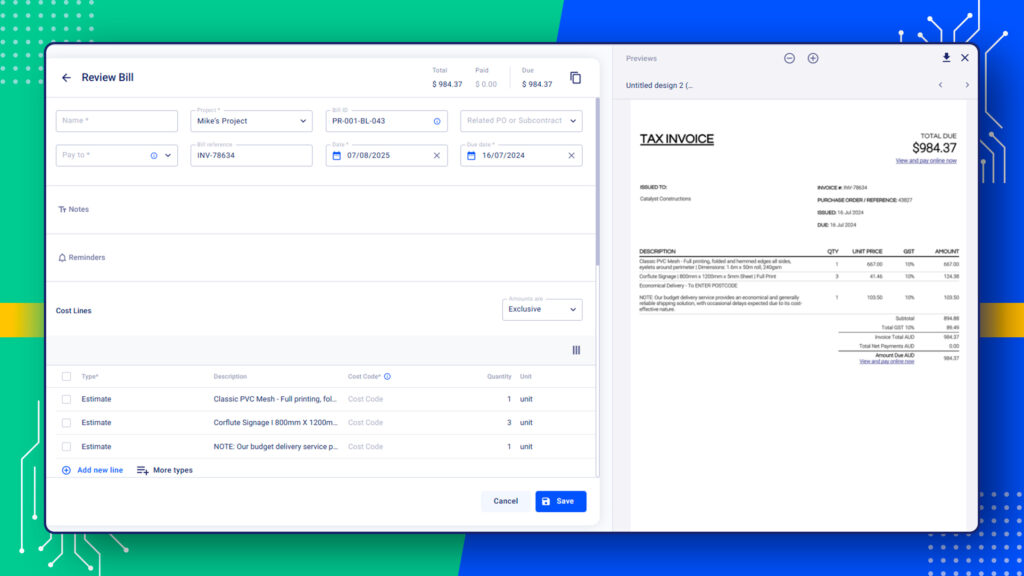
All financial data is organized, compliant, and ready for audits, ensuring you have full visibility over every project’s financial health.
Taxation in Buildern
Taxation in construction project management can often be complex and pose different challenges. Buildern stands out among Contractor Foreman alternatives by offering a solution for accurate tax calculations, deductions, and allowances, making tax management simpler and more reliable.
Buildern accurately calculates taxes, deductions, and allowances based on each job site’s location and relevant tax regulations. If your projects are in the United States or Australia, the software adapts to local tax rules and applies them automatically. Users can also set their personal tax preferences, confident that these will be consistently applied to every calculation.
Pricing
There are three main plans: a starter plan with $225 per month if paid per year, a professional plan with $360, and an enterprise level. Regardless of the plan, Buildern offers unlimited access for field workers, clients, subcontractors, and vendors.
2. Buildertrend
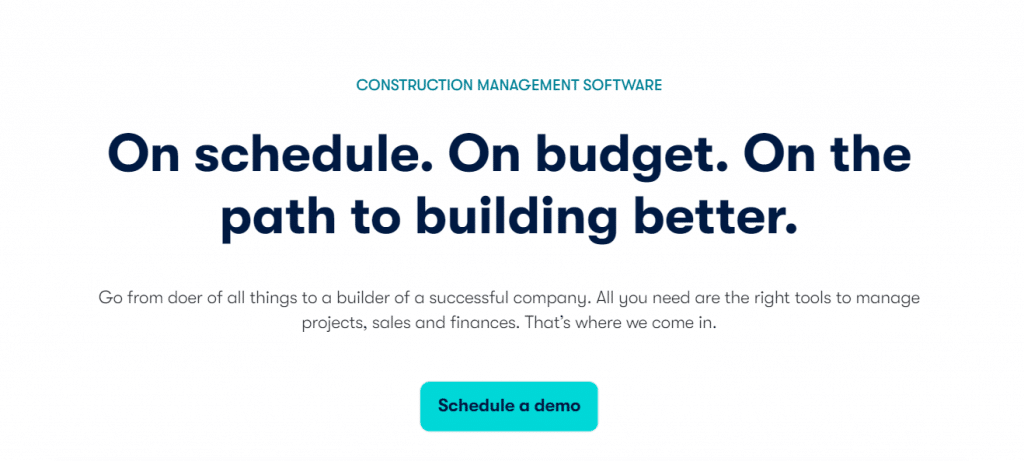
Buildertrend is a software for residential contractors seeking enhanced project management efficiency. The software has resources designed to empower builders in maintaining organization, fostering communication, and overseeing expenses, inventory, and personnel within a unified platform.
It serves as a central hub for managing customer interactions, spanning from proposal creation and invoicing to document sharing.
One of the biggest concerns users share is the setup process. Getting Buildertrend fully configured takes time, and many contractors describe the onboarding as more complicated than expected. Even after setup, some teams still rely on spreadsheets or external tools because certain workflows inside Buildertrend aren’t fully automated.
Another growing challenge is the absence of AI-powered capabilities. Buildertrend continues to operate without these modern tools.
The interface is another sticking point. Users often mention that Buildertrend’s UI feels outdated and not as intuitive as more recent solutions. Navigation can feel cluttered, making it harder for teams (especially field crews) to adopt the software quickly. Besides, there is no pricing transparency.
Pricing
No information about pricing plans; you have to fill in the questionnaire to get a custom quote.
💡Recommended Reading:
10 Buildertrend Alternatives: Succeed with Similar Software This Year!
Buildern vs. Buildertrend | 2025 In-Depth Comparison
3. Procore

Procore stands as a cloud-based construction project management software known for its advanced capabilities spanning pre-construction, project management, and financial functionalities.
A noteworthy distinction that sets Procore apart from its competitors is its incorporation of Building Information Modeling (BIM) features. Procore boasts a broader array of features, encompassing quality and safety management, a direction in which Contractor Foreman falls short.
A common complaint is the learning curve. Because Procore packs so much depth, getting the system fully set up and your team comfortable with it can take months of training and adjustment. Performance also comes up frequently in user feedback. Many contractors note that the platform can feel slow.
Pricing
Finally, pricing is complicated. Procore doesn’t list clear pricing publicly and often bases costs on annual construction volume, which can make budgeting difficult, in particular for small and mid-sized firms.
💡Recommended Reading: Top 10+ Procore Alternatives to Boost Construction Efficiency
4. Fieldwire

Fieldwire is a field management and task coordination tool that helps construction teams keep plans, issues, and punch lists organized across office and jobsite workflows.
It’s especially popular with crews that want a lightweight, mobile-friendly platform for tasks and plan markups without the overhead of a full enterprise system.
One common pain point is the lack of built-in financial and project management features. Fieldwire focuses heavily on field tasks, plan viewing, and collaboration. However, unlike the software mentioned above, it doesn’t include native budgeting, accounting integrations, or deeper project controls.
The mobile experience, while praised for plan access and offline use, also gets mixed reviews. Some users report lag when loading large files or plans, and features like drawing markups or uploading from device storage aren’t always seamless.
Pricing
Starting at $39 per user/month (billed annually).
5. Buildxact

Buildxact is a construction management platform helping residential builders and remodelers with their workflows. It’s often recommended for small to mid-sized home builders and trade contractors.
Its job management features also earn positive feedback, especially for smaller teams that need simplicity rather than enterprise-level systems.
The software isn’t without its critics. Several ongoing pain points come up repeatedly in real reviews. A common theme is that setup and learning can take longer than expected, especially for teams new to construction software. Contractors report that configuring quotes, templates, and pricing structures can be confusing at first, and digging into the more advanced features isn’t always intuitive.
Pricing
Buildxact has several pricing plans. The price starts from $169 per month for the Foundation tier if billed annually.
💡Recommended Reading: 8 Buildxact Alternatives and Competitors to Try: Build Smarter, Not Harder!
6. Houzz Pro
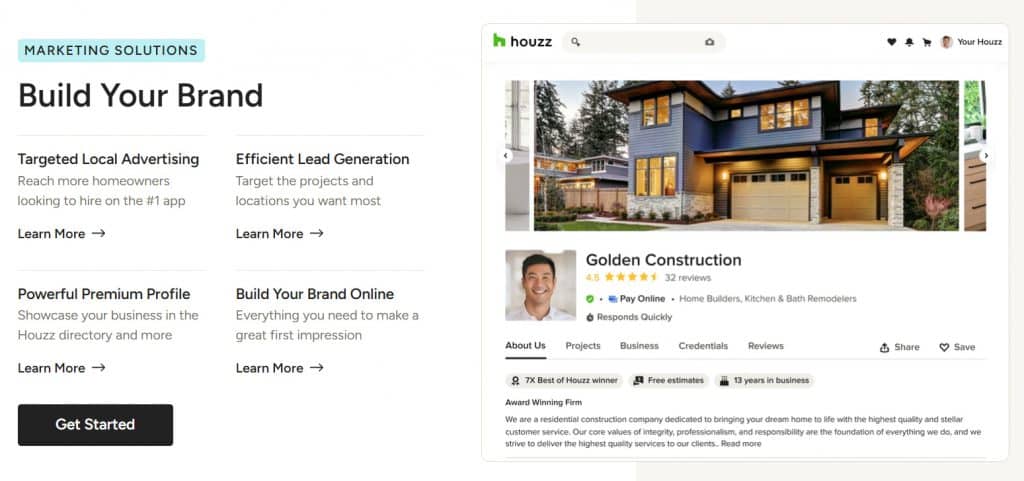
Houzz Pro is a popular choice for designers, remodelers, and small builders who want an all‑in‑one platform that combines project management with lead generation and client engagement tools. It’s a strong option for teams that want to blend operational workflows with business growth tools.
When compared to Contractor Foreman, Houzz Pro leans heavily toward designers, remodelers, and residential builders who want a mix of project management and client engagement features.
Pricing
One of the biggest frustrations contractors consistently bring up is the lack of clear pricing information. Houzz Pro doesn’t list transparent subscription costs on its website, which makes it difficult for contractors to evaluate the platform against competitors.
💡Recommended Reading: 7 Superior Houzz Pro Alternatives that Cover What It Lacks
Final Thoughts
Now, you know there are many alternatives to Contractor Foreman. Each software presents its unique set of features, strengths, and potential drawbacks. However, the best choice is a comprehensive solution, designed to meet the needs of a particular builder.
Some platforms excel at field management, others at estimating, and a few offer a full ecosystem that ties everything together from preconstruction to closeout.
For smaller teams or residential builders, simplicity and ease of use might take priority. Meanwhile, larger contractors managing multiple commercial projects may need advanced scheduling and more accounting integrations.

What Are the Best Alternatives to Contractor Foreman in 2026?
Some of the strongest alternatives include Buildern, Buildertrend, Procore, Fieldwire, Buildxact, and Houzz Pro. Each platform has unique features, strengths, and pricing models. The best choice depends on your project size, workflow needs, and team structure.
Which Platform Can Integrate Accounting?
Several platforms have accounting integration with platforms such as QuickBooks and Xero. However, it’s better to choose software, such as Buildern, that has two-way syncing to ensure the best accuracy.
Which Platform is Best for Residential and Commercial Builders?
Not every software can meet the needs of residential and commercial builders. You’d better choose the one depending on the types of your clients. However, there are some tools such as Buildern that can handle both.
